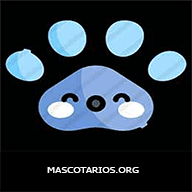Content |
|---|
History
The Rottweiler is one of the breeds of German origin that is recognized by the Federation Cynologique Internationale (FCI). The Rottweiler is a dog trotting type.
The history of the Rottweiler dates back to the 19th century. The city of Rottweil in present-day Baden-Württemberg was known for its cattle trade.. To keep animals under control on their way to pasture, farmers and butchers had to use intelligent and persistent companion dogs. At the beginning, these dogs were therefore called butcher dogs, later they were finally given the name Rottweiler due to its proximity to the city of Rottweil. Other theories about the history of the Rottweiler breed say that the canine breed was already used for cattle breeding in Rome and therefore came with the Romans through the Alps to the city of Rottweil. In the early 20th century, when people were looking for a suitable police dog, it soon became clear that the Rottweiler, with his strong, muscular stature and intrepid temperament, was particularly suitable. In 1910 the Rottweiler was officially recognized as a police dog.
those characteristics, they made it an indispensable both for farmers and butchers Assistant.
Physical characteristics
The Rottweiler is a medium to large dog, muscular, sturdy and strong with powerful teeth. Although its shape is quite robust, the Rottweiler has great resistance and is very agile. According to the breed standard, the height at the withers of a male dog is 68 cm., that of a female dog 63 cm.. The weight of a Rottweiler is between approx. 42 kg ( female) and approx. 50 kg (male). Rottweiler coat consists of a black top layer and bottom layer. The black top layer is described by the VDH (German Canine Federation) as “average length, thick, dense and tight”, while the bottom layer should not protrude from the top layer. The Rottweiler's coat is slightly longer on the hind legs. Characteristic for the Rottweiler is also the so-called blight, which means clearly defined brown-red markings on the lips, the snout, the eyebrows, under the root of the tail and on the chest.
Within this breed we can find two breeding lines, the European, considered the original and the American. The American line is characterized by taller specimens and more stylized bodies., on the other hand, European line dogs have a more compact and robust body with a shorter height.
Character and skills
Although the Rottweiler is a race that has been used for defence work, his work and typicity requires that they are described as friendly, happy talk, quiet, faithful, obedient and willingness to work. In the latest studies of aggressiveness in breeds, this was not among the top ten.
In addition the Rottweiler dog is located within the ten most intelligent dogs, they are dogs of great trust and kindness, You can be glad that it will meet the desired objective.
An important attribute that has the Rottweiler is his adiestrabilidad. It is a very intelligent and obedient dog, able to learn many tasks.
According to the classification made by Stanley Coren after analyzing the responses of more than 200 work of the AKC judges ("The Intelligence of Dogs", Stanley city, Ediciones B, 1995), the Rottweiler is the No. 9 from the list.
Its history as a shepherd, as military dog and care as well as dog obedience and exhibition, speaks highly of his versatility.
The Rottweilers are ideal as protectors of the family and property. You agree to all the members of the family and protect both the father and the son. The Rottweilers usually do not have Favorites, Although there are exceptions. They tend to be individualists, and this is due, Once again, are creatures with discernment and lists.
His intelligence “affects” to your adiestrabilidad. Just like, frequently, It is said of the cats, they are too ready to wait for repetition of an order. Once they have executed her once or twice as you like, Surely they tired of the game and seek a better output. Why do humans insist on doing these things so many times?? I already got the idea the first time and it wasn't that exciting” the Rottweiler seems to think.
In Spain the breed of dog Rottweiler It is classified as "Potentially Dangerous" by Royal Decree. This means that in the Spanish State, potentially dangerous breeds are regulated by the Law 50/1999, of the 23 from December and the Royal Decree 287/2002, of the 22 March.
So, for its possession you must obtain the license for possession of potentially dangerous dogs and register in the corresponding Municipal registration of potentially dangerous animals. One of the things that are required for this license is insurance of civil liability to third parties.
Some need more help than others, but patience is always required when you train a dog, regardless of what race.
Please understand that nothing wrong with owning a Rottweiler there is. They are amazing dogs and wonderful companion animals.. This is not an issue of race, but rather individuals who are involved with the canine behavior modification.
Rottweiler maintenance
Since the Rottweiler was bred as a persistent working dog and therefore needs a lot of leash in order to function properly, keeping him in the kennel is out of the question. But, due to its robustness, can stay out if there is a good family connection and corresponding workload. It is important to socialize the Rottweiler from the beginning through specific training and attendance at a dog school and accustom it to different situations and people.. Due to its character, the Rottweiler can be used very well as a service dog, guard dog, rescue dog or guide dog for the blind. Although it is not the classic family dog, living with children is usually not a problem. Due to its size and strength, wild games with children should be avoided, and children should not walk alone with the Rottweiler due to its enormous traction. Proper maintenance a Rottweiler includes not only a demanding occupation but also a good education.
The life expectancy of a Rottweiler
The life expectancy of a Rottweiler is with 8-10 years somewhat below average value. Unlike small dog breeds, the musculoskeletal system of larger dog breeds is already under great stress during the growth phase, causing signs of wear earlier.
Buy a Rottweiler
Before deciding on a Rottweiler, one must closely examine their attitude and character and carefully consider whether this breed is really suitable. The following questions must be answered affirmatively: Can I offer the Rottweiler enough space and exercise?? Do I have time to take care of the animal enough? Do all family members agree with the dog? Do I trust the education of a Rottweiler? Can I take my dog on vacation or what alternatives are there? If you finally decide to get a Rottweiler, doesn't necessarily have to come from a breeder. Why don't you visit the animal shelter?- Maybe you'll find a Rottweiler there that you can give a good home to.. Here the purchase is also much cheaper than with a breeder.
Rottweiler Education
The correct education is very important for a Rottweiler to promote its generally human and balanced character.. Your position in the family hierarchy should be clear to the dog from the start., so that he learns to obey and respect his master. Consistency is extremely important in Rottweiler education, and should be dominant, but without harshness. As a responsible dog owner, you must act with sovereignty, calm and especially with consideration when training a Rottweiler. The Rottweiler recognizes these positive leadership qualities, which ultimately makes him a loyal companion. As in the case of any other dog, training should begin at the puppy's age, where positive behavior is rewarded with praise, for example in the form of sweets. Caution: With insufficiently dominant leadership or erroneous and inconsistent education, Rottweiler can develop dangerous behavior – this shows the great role that the correct education of the Rottweilers plays.
Rottweiler Health and Care
Since the Rottweiler's coat is rather short to medium long, the toilet is not very complex. But, due to its agile nature, impurities can quickly accumulate on the coat, so grooming should not be neglected entirely. Occasional brushing is completely sufficient. For Rottweiler coat length, special brushes for dogs, but also cotton gloves have proven to be very effective. In addition to the toilet, foot care, as well as eye care, ears and nails should be considered to the usual extent.
Breed-specific diseases
As with many other large dogs, certain diseases occur more frequently in Rottweiler dogs. These include hip dysplasia and elbow dysplasia, both are poor development of the respective joints. Because this is due to a genetic disposition, an X-ray examination must be presented in a breed aptitude test. To prevent disease, care must be taken that the animal is not overweight and gets enough exercise. Leukoencephalomyelopathy is also a hereditary disease. It leads to progressive paralysis in young animals and is not curable., although it occurs quite infrequently. On the other hand, in recent years, heart disease has been reported more frequently in this breed. Constriction of the nerves of the heart, for example, is inherited and affects the reflux of blood from the heart, which ultimately leads to limited performance of the Rottweiler.
Rottweiler feed
Like any other dog, the Rottweiler needs a species-appropriate diet. To prevent overweight and resulting breed diseases, such as hip and elbow dysplasia, dog food should not be too fatty and above all low in protein. It is also important that the Rottweiler feeds in moderation and has limited access to the feeding bowl. Instead of being able to use a large portion of food, dog owners should distribute food appropriately for their “Rotti”. Whether dry or wet food is better for the Rottweiler, the dog owner must decide for himself.
Rottweiler puppies prefer to eat what they are used to eating from their breeder. So, it makes sense to continue feeding this food for the time being and only change food when the dog is older and may have different needs than its food. It's best to just try what the Rottweiler likes best: in addition to dry and wet food, also a healthy alternative to barking at the dog.
Characteristics "Rottweiler"
Coexistence is important that you have with your new friend. Before considering the acquisition of a dog of the breed "Rottweiler" you know certain factors. Not all breeds of dogs are apt to live in an apartment, you must take into account his character, their need for exercise, their interaction with other pets, their care and if you have small children, their level of tolerance towards them.
Adaptation ⓘ3.0 out of 5 stars (based on 1 review)
|
friendly dog ⓘ1.0 out of 5 stars (based on 1 review)
|
hair loss ⓘ3.0 out of 5 stars (based on 1 review)
|
|---|---|---|
Affection level ⓘ3.0 out of 5 stars (based on 1 review)
|
Need for exercise ⓘ3.0 out of 5 stars (based on 1 review)
|
Social need ⓘ5.0 out of 5 stars (based on 1 review)
|
Home ⓘ3.0 out of 5 stars (based on 1 review)
|
Toilet ⓘ1.0 out of 5 stars (based on 1 review)
|
Friendly with strangers ⓘ1.0 out of 5 stars (based on 1 review)
|
barking ⓘ2.0 out of 5 stars (based on 1 review)
|
Health ⓘ3.0 out of 5 stars (based on 1 review)
|
Territorial ⓘ5.0 out of 5 stars (based on 1 review)
|
Cat friendly ⓘ3.0 out of 5 stars (based on 1 review)
|
Intelligence ⓘ4.0 out of 5 stars (based on 1 review)
|
Versatility ⓘ3.0 out of 5 stars (based on 1 review)
|
Child friendly ⓘ2.0 out of 5 stars (based on 1 review)
|
Surveillance ⓘ3.0 out of 5 stars (based on 1 review)
|
joy ⓘ5.0 out of 5 stars (based on 1 review)
|
Rottweiler Images
Rottweiler Videos
Type and recognitions:
- FCI CLASSIFICATION: 147
- Group 2: Pinscher and Schnauzer - Molossoid and Swiss Mountain and Cattledogs
- Section 2.1: Molossoid, mastiff type. With proof of work..
Federations:
- – FCI – Pinscher and Schnauzer-Molossoid type dogs – Swiss Mountain Dogs and Cattledogs. Section 2.1 Molossoid, mastiff type. ⓘ
- – AKC – Working dogs ⓘ
- – ANKC – Group 6 (utility dogs) ⓘ
- – CKC – Group 3 (working dogs) ⓘ
- – KC – Working dogs ⓘ
- – NZKC – Utility dog ⓘ
- – UKC – Watchdog ⓘ
FCI breed standard "Rottweiler"
Alternative names:
1. Rott, Rottie (English).
2. Rottweiler (French).
3. Rottweiler Metzgerhund (German).
4. Rottweiler Metzgerhund (Portuguese).
5. Rottie, Rott (español).
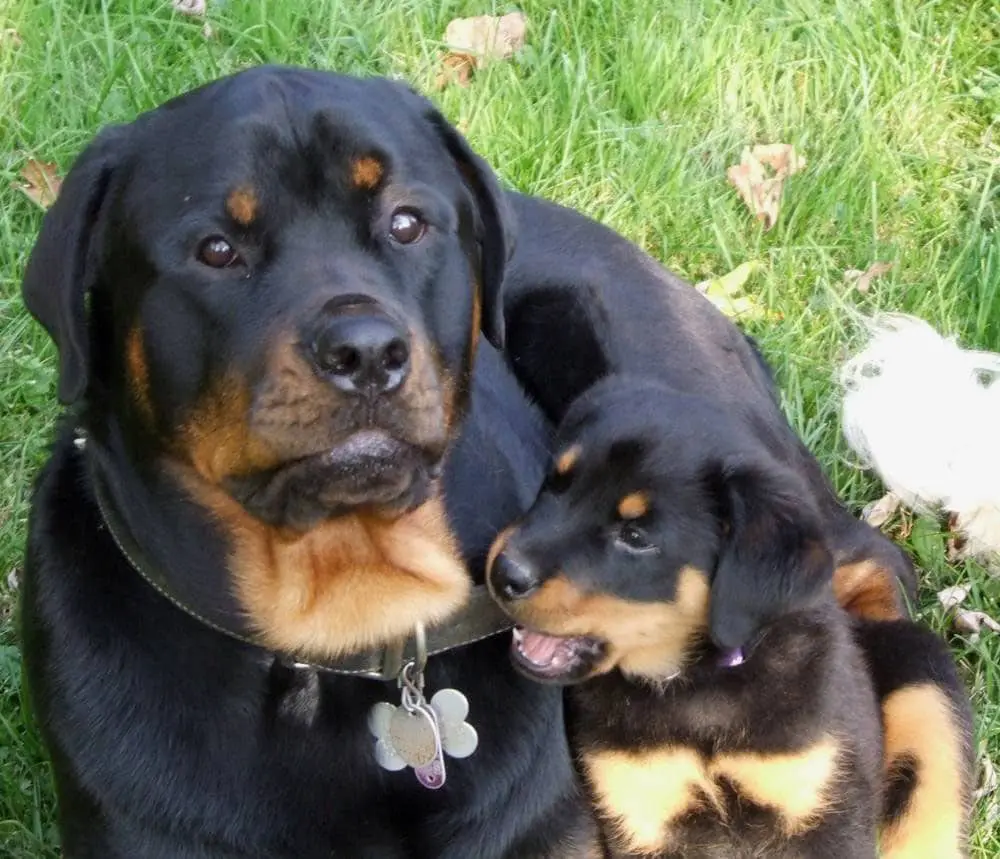
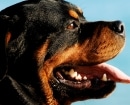
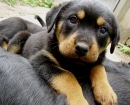
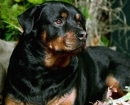
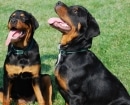
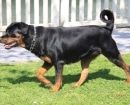
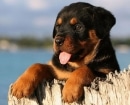
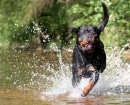
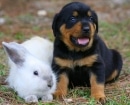
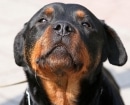

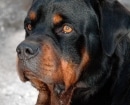
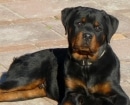
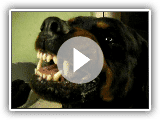 Our rottweiler dangerous diesel
Our rottweiler dangerous diesel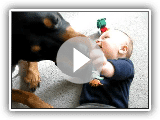 Rottweiler playing with a child
Rottweiler playing with a child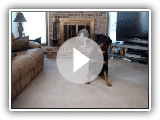 Rottweiler playing dead
Rottweiler playing dead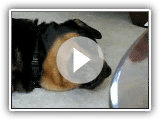 Beagle Puppy Attacks Rottweiler
Beagle Puppy Attacks Rottweiler